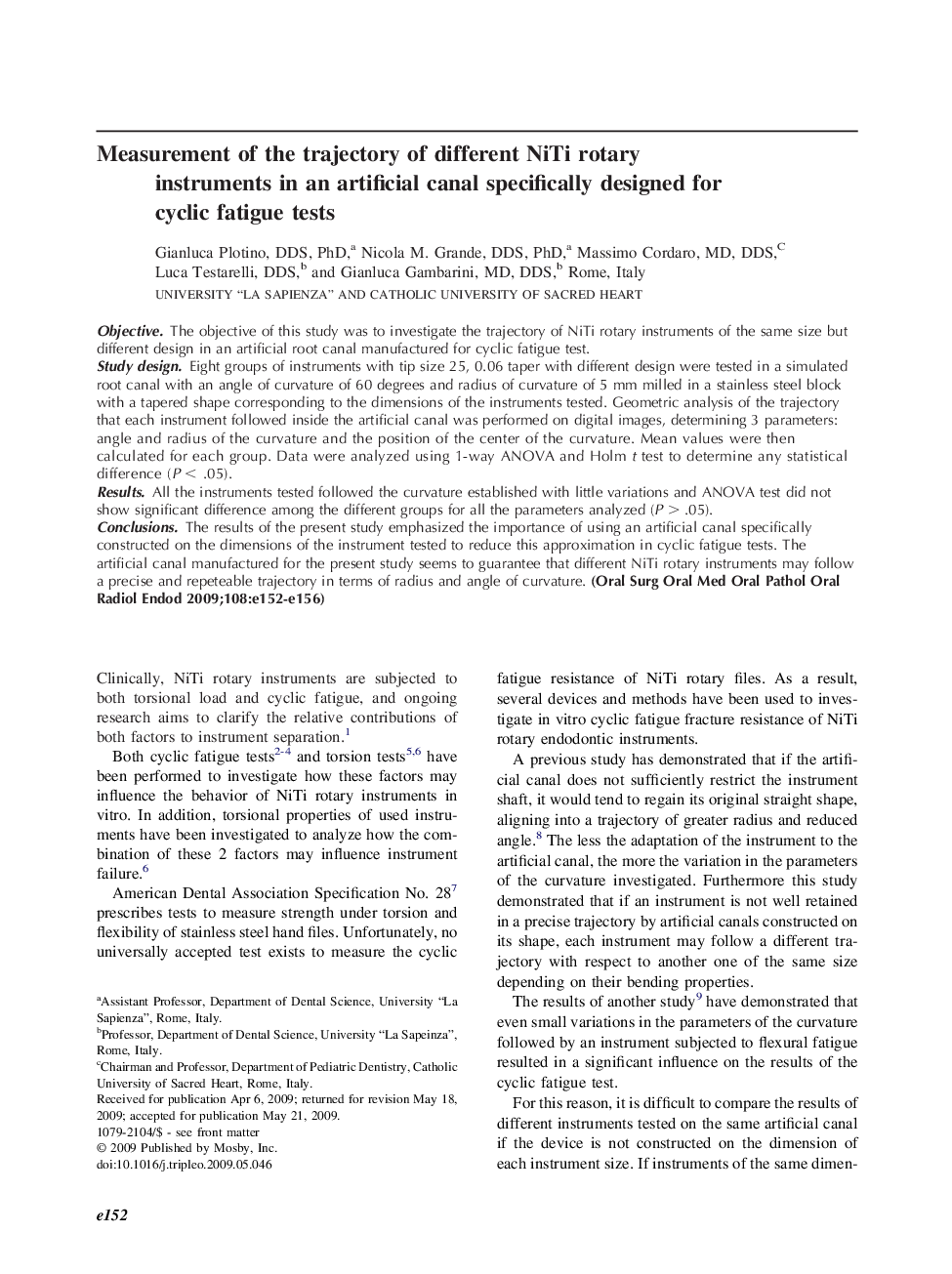| Article ID | Journal | Published Year | Pages | File Type |
|---|---|---|---|---|
| 3168005 | Oral Surgery, Oral Medicine, Oral Pathology, Oral Radiology, and Endodontology | 2009 | 5 Pages |
ObjectiveThe objective of this study was to investigate the trajectory of NiTi rotary instruments of the same size but different design in an artificial root canal manufactured for cyclic fatigue test.Study designEight groups of instruments with tip size 25, 0.06 taper with different design were tested in a simulated root canal with an angle of curvature of 60 degrees and radius of curvature of 5 mm milled in a stainless steel block with a tapered shape corresponding to the dimensions of the instruments tested. Geometric analysis of the trajectory that each instrument followed inside the artificial canal was performed on digital images, determining 3 parameters: angle and radius of the curvature and the position of the center of the curvature. Mean values were then calculated for each group. Data were analyzed using 1-way ANOVA and Holm t test to determine any statistical difference (P < .05).ResultsAll the instruments tested followed the curvature established with little variations and ANOVA test did not show significant difference among the different groups for all the parameters analyzed (P > .05).ConclusionsThe results of the present study emphasized the importance of using an artificial canal specifically constructed on the dimensions of the instrument tested to reduce this approximation in cyclic fatigue tests. The artificial canal manufactured for the present study seems to guarantee that different NiTi rotary instruments may follow a precise and repeteable trajectory in terms of radius and angle of curvature.
